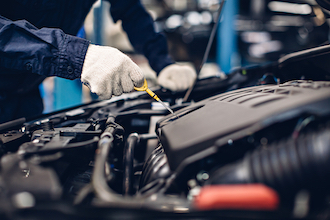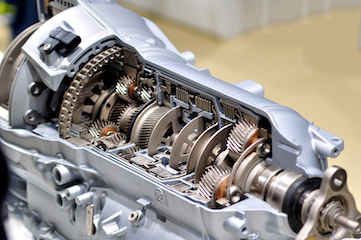Chevrolet Silverados are popular for their pulling capacity and sleek designs. They often come with a hefty price tag, too. However, these pricey vehicles can still come with some pricey problems. One of the most serious issues plaguing this model comes from widely-reported engine difficulties. Hundreds of reports are online regarding leaks and power problems, and even blown engines. And as most people know, it's pretty tough to sell a truck with a blown engine.
Like all vehicles, there are a handful of irritating trends that pop up periodically to remind you that Chevy doesn’t have it all figured out quite yet.
Get an Instant Online Offer for Your Car!
Enter your zip code below to get your FREE estimate and see how much your car is worth. Get paid the real cash value of your car in 24-48 hours!
Common Chevy Silverado Problems
For the sake of this article, we’re going to focus on the 1999 and newer models. That’s when the biggest offender comes into play – the 5.3 Chevy engine problems.
Chevrolet Silverado Oil Pressure Warning
Have you really driven your Chevy Silverado if you haven’t seen the “LOW OIL PRESSURE” warning come on? It’s one of the signals that many a Chevrolet and GMC truck owner has experienced firsthand. The low oil pressure warning comes on due to one of two things: true low oil pressure, or an oil pressure sensor issue.
We’ll talk about true low oil pressure soon. But one of the flaws that plagues Chevy trucks is a faulty oil pressure switch or sensor. Older trucks, previous to the 2007 redesign, have an oil pressure switch that tends to fail. It’s a minor problem that’s a serious pain to fix because the switch is located behind the intake manifold. The 2007 and newer models, though, is a different story.
The false low oil pressure reading on a 2007 Chevy Silverado and newer trucks is an oil pressure sensor located under the plenum. There’s a small screen that plugs up with sludge and debris. The sensor just can’t get an accurate reading, and it throws the light on for low pressure. It’s three to four hours of labor to change, and it’s just a nuisance to undergo this kind of engine diagnosis for an engine problem that might not be there.
Chevy’s Excessive Oil Consumption
Chevrolet Silverado engine problems aren’t restricted to faulty sensors. For 1999 to 2017 models, especially the V6 and 5.3-liter V8 engines, oil consumption was a real concern. We’re talking about 3 or 4 quarts between oil changes, and sometimes more.
Why does the Chevy Silverado burn oil? It isn’t an external leak but rather an internal one. Spark plugs continuously foul because engine oil gets past the piston rings into the combustion chamber. Exhaust is tinged blue from all the oil blowing out the tailpipe. On some trucks, the problem shows signs as early as 15,000 miles, and it only gets worse.
To fix it, there are two common corrections. Both cost thousands of dollars in parts and labor. Either the engine is removed, stripped down to a bare engine block and undergo an engine rebuild with new piston rings, seals, and gaskets, or the complete engine assembly is replaced with a new one.
Engine Knock
That’s not the end of the 5.3 Chevy engine problems, unfortunately. We all know how important engine maintenance is to long-term vehicle health. If the 5.3-liter engine doesn’t receive oil changes on time, sludge can quickly build up on internal components.
This sludge is a gooey, sticky black tarlike substance that plugs everything up. Oil passages that keep bearings and moving parts lubricated become blocked. Important parts are starved of oil and wear down quickly. It’s exhibited by an engine knock that sometimes goes away when the engine is warm. When you start hearing an engine knocking noise you need to get it looked at right away.
If it’s caught early, an engine oil flush can break up some of the sludge and extend your engine’s life. This is on of those Chevy Silverado problems that will eventually need to be fixed properly. That’s accomplished by stripping the engine down for a rebuild or replacing the complete engine.
Leaving the problem without a repair almost always results in the same thing: a Chevy Silverado blown engine. That's one major reason a Chevy Silverado won't turn over.
How can I get a quote for my junk car instantly?
It's simple and it takes less than 90 seconds... click the button below to get started and find out how much your junk vehicle is worth!
Vehicle Pick-up is FREE Nationwide. No Haggle. No Fees. We are A+ rated business at BBB.
Chevy Silverado Transmission Problems
With a pickup truck, you’re going to expect more repairs than a passenger vehicle or SUV, especially if you work it hard. That’s what it’s for, isn’t it? The Silverado has a durable drivetrain for the most part and 4WD components don’t commonly need to be repaired or replaced if they’re maintained right. But the transmission is a different story.
 Chevy Silverado transmission problems show up first as shift flares while you’re accelerating. Then the Check Engine light comes on for ‘loss of prime’ codes. Soon after, the transmission won’t engage forward, reverse, or both.
Chevy Silverado transmission problems show up first as shift flares while you’re accelerating. Then the Check Engine light comes on for ‘loss of prime’ codes. Soon after, the transmission won’t engage forward, reverse, or both.
Again, lack of maintenance is often the culprit. Once symptoms are present, it’s too late just to change the transmission fluid and filter. The whole transmission will need to be removed and rebuilt or replaced. Commonly, the clutches are burnt but it’s also been found to be valve body, sun gears, or other internal hard parts.
The Worst Offender, the 2007 Chevy Silverado's Problems
The first year of a model redesign is usually where you’ll find the most complaints. No doubt, that’s the case for the 2007 Chevrolet Silverado. Problems immediately surfaced in several areas. There were speakers that cut out routinely and needed to be replaced. The dashboard pad cracked. For some owners, the battery would often be dead because of a relay problem. With all of these issues, it'd definitely be tough to sell your truck.
Then there are the more serious issues. The rear differential would clunk badly, requiring a differential overhaul to fix the noise. The aforementioned transmission flaws were prevalent in the 2007 Chevy Silverado. And blown engines were a fact of life for hundreds of Silverado owners across North America.
From 2007 through 2009, the engine problems continued to plague Chevy and the sister vehicle, the GMC Sierra, with the 5.3-liter V8 engine. You couldn’t get away from it, whether it’s the oil pressure problem, engine knock, or excessive oil consumption.
Then in 2010, Chevy got a handle on it and complaints became fewer.

2014 Silverados to Now
For the Silverado, another redesign in 2014 and another in 2019 were welcome changes. Engines are more reliable and even more powerful. Yet, it could be too early to see their true colors come out.
My Chevy Silverado Has a Blown Engine. Can I Sell My Truck?
Don’t feel like shelling out thousands of dollars to fix your Chevy’s blown engine? You’re not alone. Instead of fixing it up, you could sell it as-is to CarBrain.
It’s simple. Request an online quote for your truck as it sits right now. Blown engine, bashed up body, slipping transmission – even a branded title – we’ll give you a fair offer for it. If you accept it, we’ll pick it up from you and give you cash for it. Simple as that! So find out how much your truck is worth by clicking the button below.

